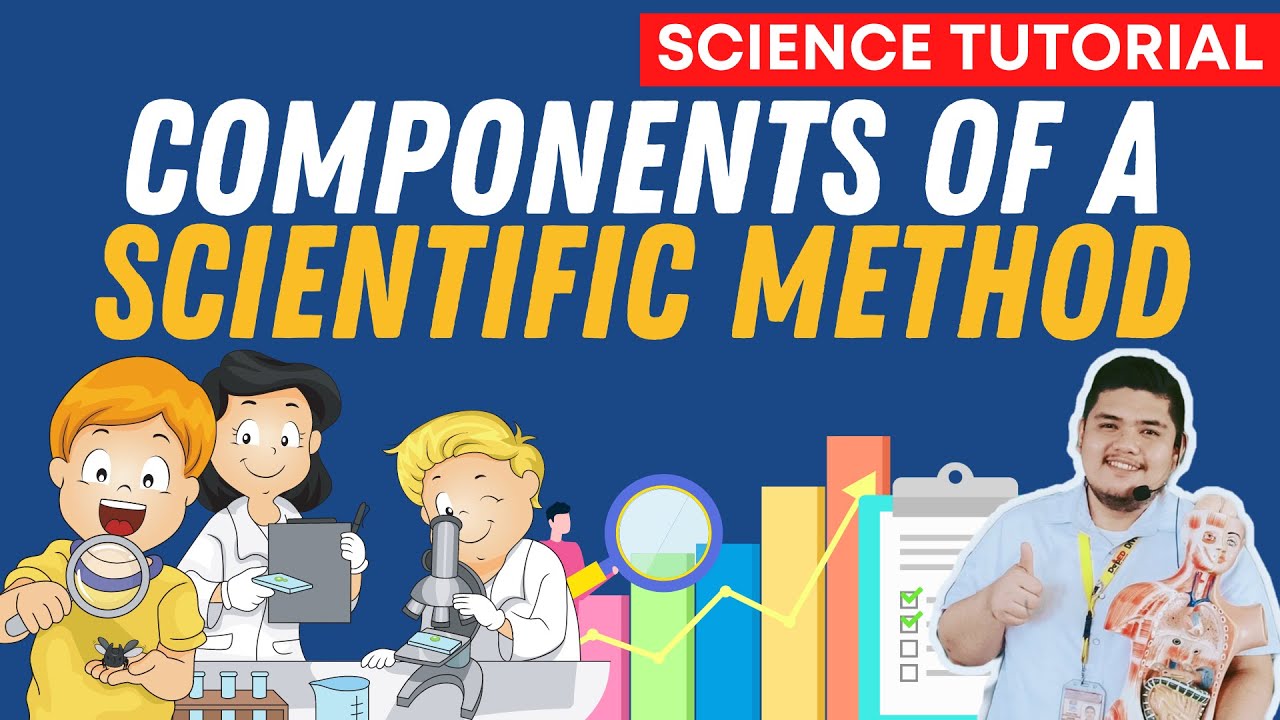Tools of Science: Testable Questions
Summary
TLDRThis educational video script delves into the scientific method, emphasizing the significance of asking testable questions. It introduces marine microbiologists Kim and Kay, who investigate how light influences the interaction between a phytoplankton species and its infecting virus. The script outlines the SMART criteria for formulating testable questions: Specific, Measurable, Achievable, Relevant, and Temporal. Through their research, Kim and Kay exemplify the scientific process, guiding viewers to understand how to transform a broad inquiry into a precise, investigable question.
Takeaways
- 🔬 Scientists are driven by curiosity and ask testable questions to understand phenomena.
- 🌐 Marine microbiologists Kim and Kay study how light affects interactions between phytoplankton and viruses in the ocean.
- 🤔 Initial curiosity questions often lead to scientific research but need to be refined into testable questions.
- 🔍 The SMART acronym (Specific, Measurable, Achievable, Relevant, and Temporal) helps in formulating testable questions.
- 🎯 A testable question should have a clear, single answer to be effective for scientific inquiry.
- ⚖️ Measurable questions allow for quantifiable results, which are essential for scientific experiments.
- 🏋️ Achievable questions consider the resources and time available for conducting experiments.
- 🌊 Relevance ensures that the question pertains to the actual conditions and context of the study, such as the natural environment of the organisms.
- ⏳ Temporal considerations mean that the question should be relevant to a specific time frame, aligning with the natural processes being studied.
- 🧪 Professional scientists continuously practice thinking scientifically to ensure their questions are testable and yield meaningful results.
Q & A
What is the common trait among all scientists regardless of their field of study?
-All scientists, regardless of their field, share a natural curiosity and start their research with a testable question.
What is the role of light in the research conducted by Kim and Kay?
-In the research by Kim and Kay, light is studied for its role in mediating host-virus interactions in the ocean, specifically how it may structure infection processes.
Why are testable questions essential in scientific research?
-Testable questions are essential because they allow scientists to design experiments that yield meaningful results, which are crucial for advancing scientific understanding.
What does the acronym SMART stand for in the context of formulating testable questions?
-In the context of formulating testable questions, SMART stands for Specific, Measurable, Achievable, Relevant, and Temporal.
How does the specificity of a question influence the design of scientific experiments?
-A specific question allows for the design of experiments that can provide definitive yes or no answers, which is necessary for obtaining meaningful results.
What challenges does Kim face when trying to measure the effect of light on the viral process?
-Kim faces the challenge that light affects both the host and the virus, so the range of light tested must be narrow enough to affect the virus without impacting the host's well-being.
Why is it important for a testable question to be achievable?
-A testable question must be achievable to ensure that the necessary resources, time, and conditions are available to perform the experiment and obtain valid results.
How does the relevance of a question impact its importance in scientific research?
-A question's relevance ensures that the research is focused on phenomena that are significant and applicable to the real-world context, making the findings more meaningful.
What does the temporal aspect of a testable question imply for the design of experiments?
-The temporal aspect of a testable question implies that the experiments should be designed within a specific time frame that is relevant to the phenomenon being studied.
How do professional scientists ensure their questions are testable without consciously using the SMART acronym?
-Professional scientists ensure their questions are testable by continuously practicing scientific thinking, which includes implicitly considering the SMART criteria to formulate meaningful and answerable questions.
Outlines

This section is available to paid users only. Please upgrade to access this part.
Upgrade NowMindmap

This section is available to paid users only. Please upgrade to access this part.
Upgrade NowKeywords

This section is available to paid users only. Please upgrade to access this part.
Upgrade NowHighlights

This section is available to paid users only. Please upgrade to access this part.
Upgrade NowTranscripts

This section is available to paid users only. Please upgrade to access this part.
Upgrade NowBrowse More Related Video

The scientific method

What do scientists do? ⚛ What is a Scientist? ⚛ Scientific Process ⚛ Science Oasis

The Scientific Inquiry Process

SCIENTIFIC METHOD SCIENCE 7 QUARTER 1 MODULE 1 WEEK 1 COMPONENTS OF SCIENTIFIC INVESTIGATION

#3 How Psychologists use the Scientific Method - Psy 101

The Scientific Method: Steps and Examples
5.0 / 5 (0 votes)